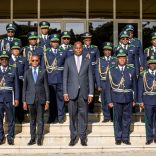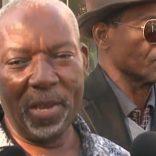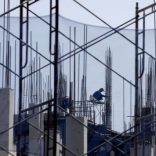Mozambique: President calls for transformative leadership in public universities
Mozambique: Reconquering the forbidden road – Report

Image: Lusa
A delegation of Mozambican authorities set off on Tuesday to reconquer the only tarmac road linking the north and south of Cabo Delgado, a province in the north of the country subject to armed conflict.
EN380 used to be a fundamental link in the province. Still, it became impassable after four and a half years of an armed insurgency because of attacks on cars that killed several people and bridges collapsed because of a lack of repairs.
Osvaldo Petersburo, Mozambique’s Secretary of State for Youth and Employment, was the first official to travel up and down the road, despite the impossibility of recording images, for security reasons.
“We could witness the horror of the destruction” on what he classified as an effort by the Defence and Security Forces (FDS) to “restore normality”.
“The populations are returning, gradually. The government is going to do its part”, he said, concerned above all in guaranteeing training, means of sustenance and support for youth employment.
The delegation had eight cars carrying about 30 people, including local authorities, government teams, and journalists.
Between Pemba and Macomia, the safer zone of the province, in the southern part of Cabo Delgado, the journey was made without police or military forces.
The motorcade was led by a car with six police officers from Macomia onwards.
Macomia was and again wants to be a trading post, crossroads and meeting point, right in the middle of the EN 380, a strategic point in the centre of Cabo Delgado – which was taken over and turned upside down by the insurgents in May 2020, leading to a general stampede from which the town is still trying to recover.
And if even now there are those who do not risk travelling to Macomia, there are even fewer from there northwards.
But the delegation moved on and stopped at places along the road, each one a guardian of chapters from this and old wars (such as the liberation struggle against the Portuguese colonial regime): Chai, Miangaleua and Awasse crossroads, the one where the police station, the target of the first insurgency attack in the early hours of October 5, 2017, is located, along with Mocímboa da Praia.
In Miangaleua, three bridges are to be repaired, and the delegation moved forward thanks to detours that bypass them and allow them to cross the rivers.
Osvaldo Petersburgo stopped and spoke with the military, the only ones occupying those villages after the population fled.
More and more photographs on mobile phones were sent to the Presidency of the Republic and to partners such as the oil company Totalenergies – whose mega-project to explore gas off the coast in Afungi (Palma) was suspended a year ago because of the attacks.
He said it is important to be on the ground to demonstrate increased security.
At the Awasse junction, the delegation headed inland towards Mueda, and from here on, the villages were populated, starting with Diaca (the village next to Awasse).
On their return, on Saturday, the delegation stopped again in Diaca and Awasse, and Petersburgo even went for a 300-metre walk, during which they were shown a place where insurgents were hiding.
The stop with the worst memories was in Xitaxi, where insurgent groups reportedly gunned down 50 residents on 8 April 2020 in one of the bloodiest attacks of the conflict – an official report was announced but never released.
Petersburgo toured the area and received explanations about the site before heading on his way and setting foot in Macomia again.
Gomes Acaisse, 37, a native of that town, fled to the provincial capital, Pemba, due to the attacks and returned to Macomia in March, after announcements that security had been re-established.
He shows his store: he reopened a shoe shop he had had for five years, but now he can only earn 50 meticais (about €0.72) a day, compared to more than 500 meticais (€7.25) before the attacks.
Still, it is a lesser evil because in Pemba, he had “no way” to support his family.
“I think people are, little by little, returning,” he told Lusa, sitting at his stall under the watchful eye of his 4-year-old son.
He is always sitting next to his father, he fears he will be alone because he watched the rebels arrive in an attack on Macomia in 2021.
Eduardo Focas, 29, a clothes seller, has set up his stall again in that village but says that the clientele still does not pass through there, at least as they did before the armed insurgency.
“We have managed some sales. A little bit, but not like before, because the people haven’t come back yet and there is no movement, the cars don’t pass by,” he told Lusa.
Petersburgo hoped that his had been the first of other trips in the desired return to normality.
In Mueda, the Secretary of State for Youth and Employment handed over 60 ‘kits’ for self-employment under the program My Kit, My Job, an initiative with support from the World Bank.
The programme is based on an application period that has been opened in different districts, supporting entrepreneurs chosen in each one based on the best proposals.
In Mueda, the heart of Cabo Delgado, on the Maconde plateau – homeland of Mozambican President Filipe Nyusi – support has been delivered for job creation in the area of electricity, block manufacturing, vehicle washing, an ice cream parlour, motorbike repair, cooking, corn and peanut processing and other agricultural activities.
“We want the youth to come back. Training these young people and giving them a ‘kit’ is a priority,” concluded Petersburgo.












Leave a Reply
Be the First to Comment!
You must be logged in to post a comment.
You must be logged in to post a comment.